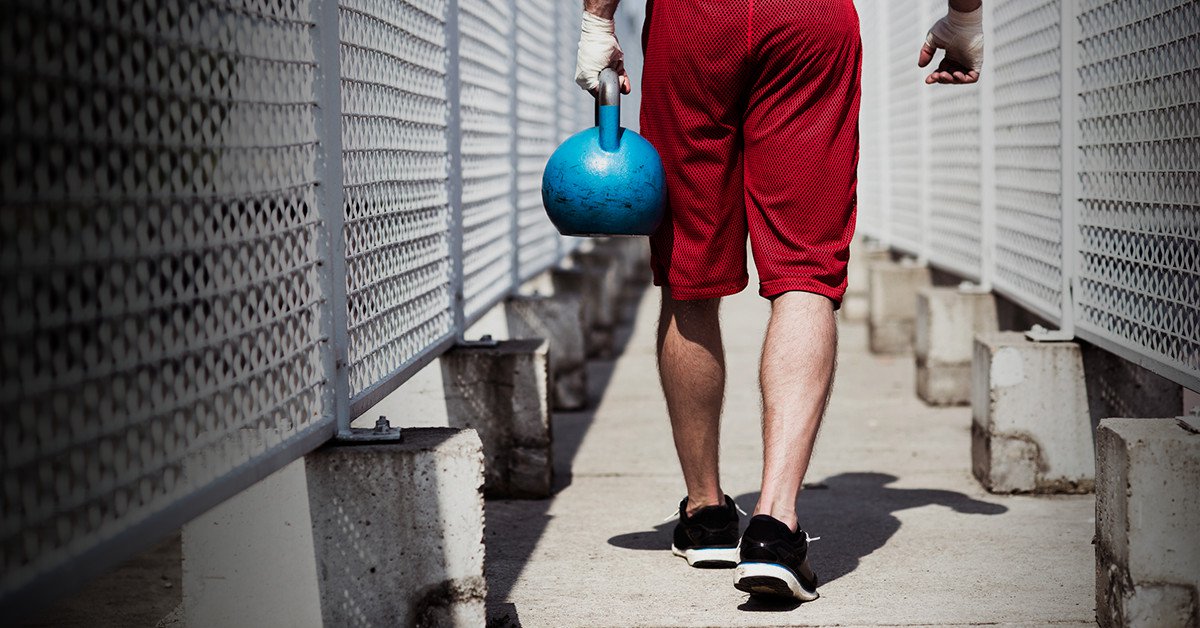
5 Loaded Carry Strength Exercises
Next up in my “Exercises You Should Be Doing” series is the Loaded Carry. While this may be one of the simpler looking exercises you may ever do, don’t let it fool you into thinking it’s not very effective. When done right, this “simple” exercise can be a game-changer for those looking to take their fitness conditioning to a whole new level! Loaded carries were first popularized by famed strength coach Dan John, who often refers to them as the missing ingredient for those looking to add muscle, develop strength, and drop fat. Coach John believes that loaded carries do more to expand athletic qualities than any other single exercise he’s done in his career. That’s a pretty strong statement! So what exactly is a Loaded Carry? The short and very simple answer is it’s when you take an implement of your choice (kettlebell, weight plate, dumbbell, sandbag, etc.) and you walk with it. Simple, right? Some of you may say, “If it’s that simple, why don’t we see more people doing them?” I’d guess that people just don’t know enough about them and the benefits they provide to all fitness levels. I’d also guess that after reading this and trying them, you’ll make them a staple in your training program!What Makes Loaded Carries So Good For Building Muscle?
Before we jump into how to do Loaded Carries, we must first expand on the “why” you should do them. With the popularity of “functional fitness” today, nothing screams functional more than loaded carries. You are performing something you do on a daily basis….picking things up and walking with them! In actuality, Loaded Carries work nearly every muscle in your body while improving your strength, stability and overall conditioning. They’re great for building the muscles of the upper back, creating strong and healthy shoulders, improving grip strength, building a strong and stable core, and developing a good, upright posture.How To Do Loaded Carries And Some Variations
While it would be easy for me to just say, “pick up something heavy and walk with it,” I’ll instead go into some of the Loaded Carry variations and help you choose where to start and how to progress.Farmer’s Walk
Perhaps the most basic carry is the farmer’s walk. Simply begin by grabbing a pair of kettlebells, dumbbells, sandbags, etc. and carry them for a set distance or time. We’ll use anywhere from 20-100 yards or 30 seconds to 2 minutes, depending on the fitness level and amount being carried. Be sure to focus on good tall posture and a steady walking pace.Suitcase Carry
A suitcase carry is basically just a farmer’s walk, but with a weight in only one hand – just like carrying a suitcase! This will challenge your outer core area (obliques) as your body compensates for the weight being on one side. Whatever time or distance you choose, be sure to do the same for the other side.The Rack Carry
These are typically done with one or two kettlebells and are a nice progression to farmer’s walks as they tend to challenge the abs to stabilize and work harder. Depending on the weight used, you may also find it a bit more difficult to breathe with the weight on the upper chest area. These are a great way to focus on breathing under stress and are great for overall conditioning.Waiter’s Walk or Overhead Carry
The waiter’s walk is an overhead variation on a Loaded Carry. Like the rack carry, it can be done with one or two kettlebells, or you can also easily use dumbbells for this carry. These are great for overall shoulder health and stability, but be careful of any pre-existing shoulder issues…especially when performing the double overhead walk.Cross Carries
These are a great way to mix up a couple of the above carries and really challenge the core by teaching your body to lock down the midsection. Hold one kettlebell of dumbbell in a suitcase carry while the other arm has a kettlebell or dumbbell in a waiter’s carry. The weights used can be the same amount or, to really challenge yourself, use a heavier weight in the suitcase hand. As you can see, there are quite a few options when it comes to Loaded Carries. I suggest starting off basic (Farmer’s Walk, Suitcase Carries) and then progress to others as you begin to feel comfortable with challenging the weight used and/or the distance walked. Carries can be throw-in pretty much anywhere in your workout program. We’ll often use them toward the end of a progressive warm-up, as a challenging finisher to a workout, or as part of a total body circuit. An example of that would be: Push-Ups – 10-12 reps Farmer’s Walk – 30 seconds Lat Pulldowns – 10 reps Farmer’s Walk – 30 seconds Shoulder Press – 10 reps Farmer’s Walk – 30 seconds Squats – 10 reps Farmer’s Walk – 30 seconds Rest 2 minutes and repeat the above for a total of 3 roundsImage
About the writer: Ken Grall is a Certified Strength & Conditioning Specialist (CSCS) and owns and operates an Edge Fitness in Madison, Wisconsin. Learn more about Ken.
